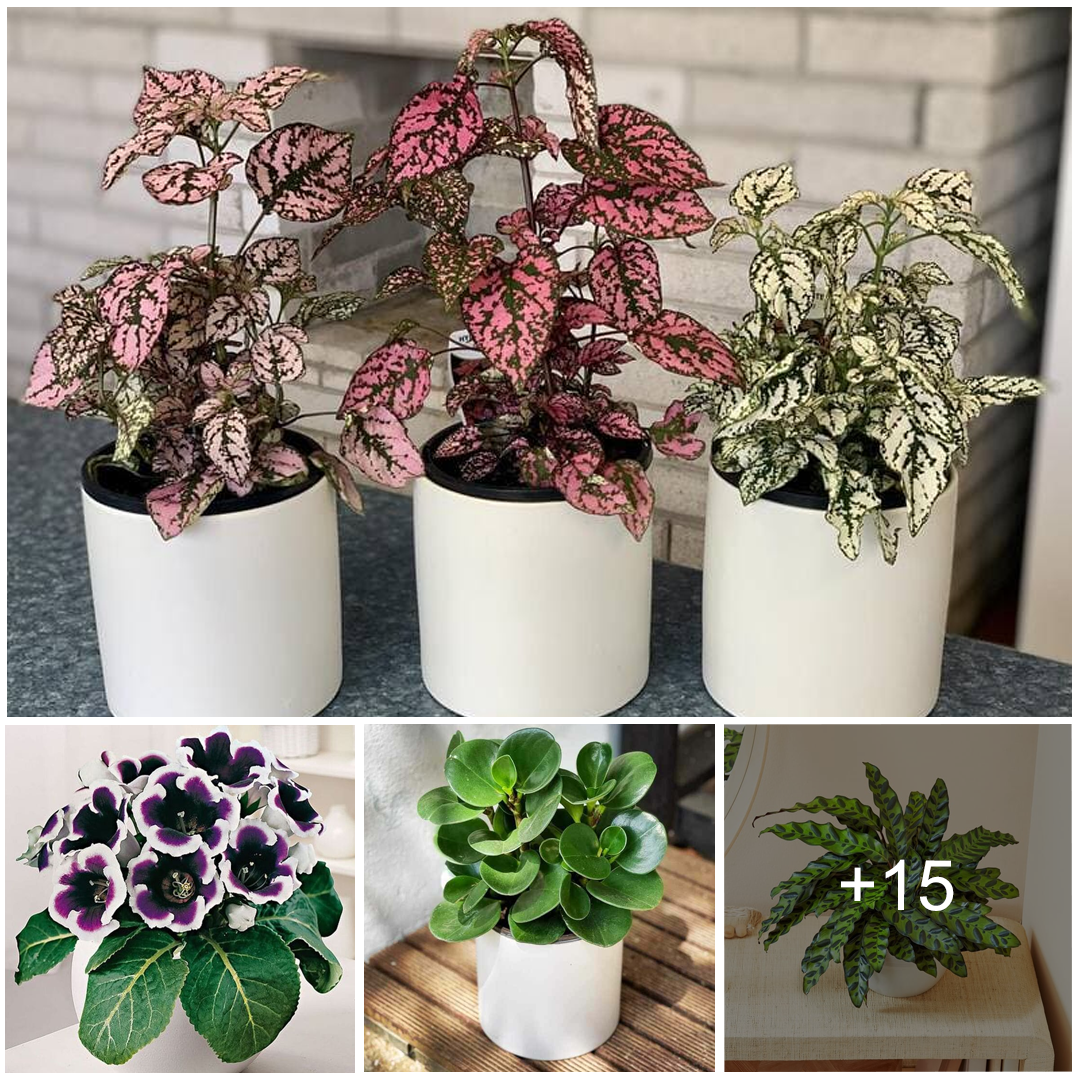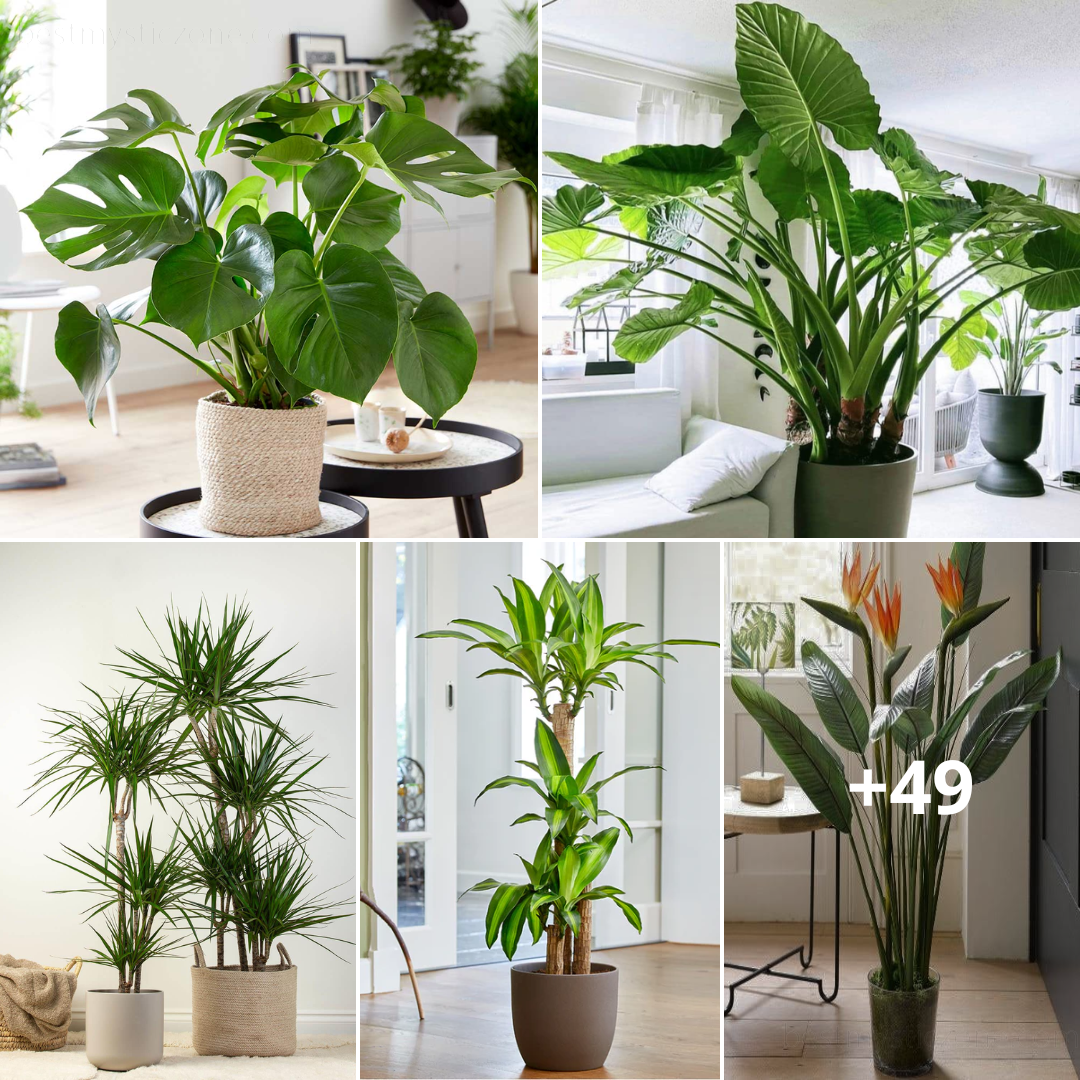
Spiky houseplants are great for making your plant collection more interesting or even adding security to your home without ruining your garden’s look.
Foliage with spiky leaves or stems can provide a dramatic edgy accent and texture to your garden, they can come as potted plants or can be grown straight from your garden’s ground.
There are many different kinds of spiky plants, and plenty of them are suitable for garden beginners; also here are some other great plants for your home.
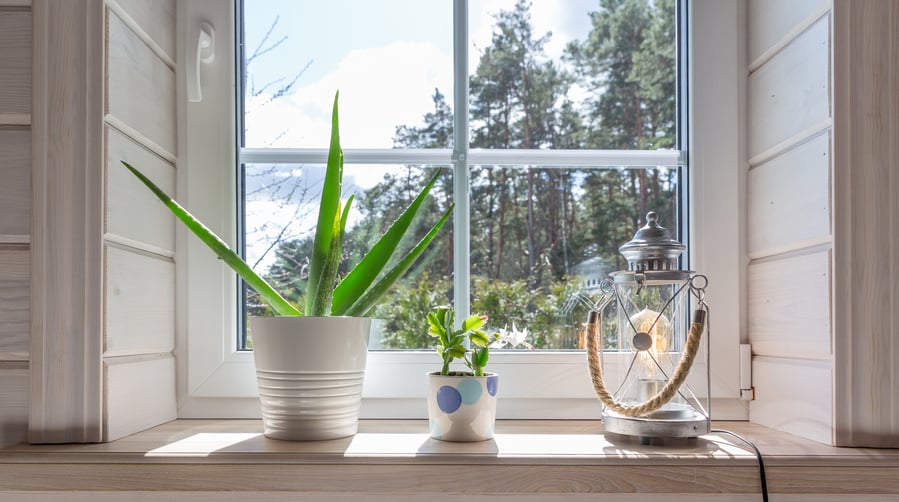
5 Best spiky plants for decoration and intrigue
Plants that bloom sweetly may be pretty, but you may want other species better suited to show off your multifaceted personality. Your garden can be made more intriguing with spiky leaves and thorny plants.
When choosing plants or trees, make sure that they will be suitable for your growing area. When planting, check the environment and soil type. Remember that you need to consider the height of the plant when it is fully grown and how invasive it could be.
Check out the following beautiful and spiky options for your yard:
1. Agave
The agave plant, a genus of monocots, is native to the Americas, and thrives in hot and arid conditions. Agave plants are drought tolerant and love sunlight. The agave typically forms rosettes of strong, fleshy green variegated leaves. Although also called a century plant, the agave plant usually lives for 10 to 30 years.
In general, its dark green spiky leaves can grows approximately 6-10 feet. However, there are many species of Agave, some of them are smaller specimens. The whale’s tongue, for example can only grow a full height of 4 feet.
Be careful! The long leaves have a prickly margin and spiked tip and can draw blood. So aware of where you place the Agave in your garden.
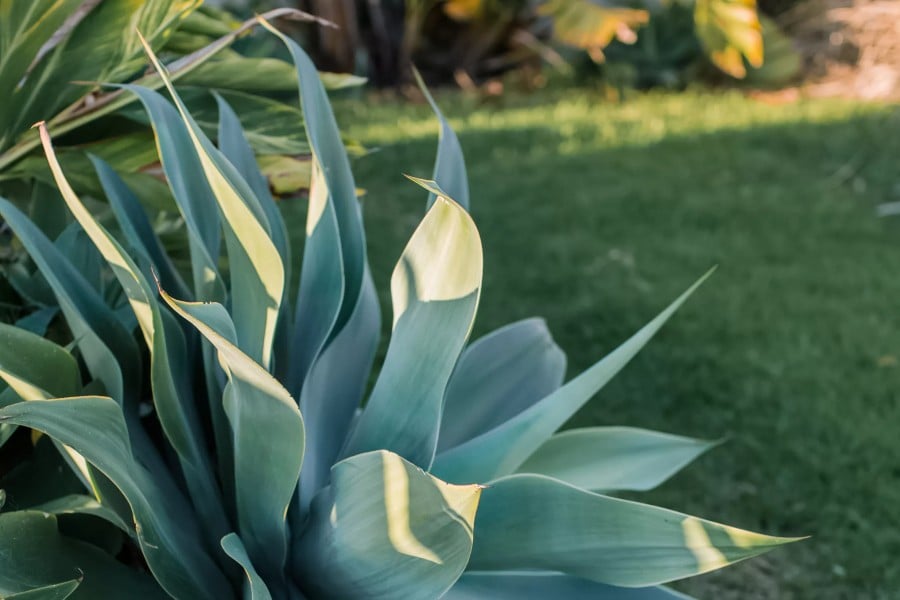
2. Golden Barrel Cactus
Echinocactus grusonii or commonly known as the golden barrel cacti is a cheerful addition to your garden. These round barrel-like cacti grow stiff yellow needles along its ribs. They can grow as much as 3 feet tall and 3 feet around and has white-coloured woolen hair at the top.
These cacti need a lot of watering but surprisingly, full sunlight exposure is really not necessary. When you plant them you will notice that it avoids the sun by itself as much as it can.
Plant it in a safe spot in your garden or as potted plant. But remember to leave room for the pups or the new offsets. The cacti usually grows from a well-established root base, often in clusters.
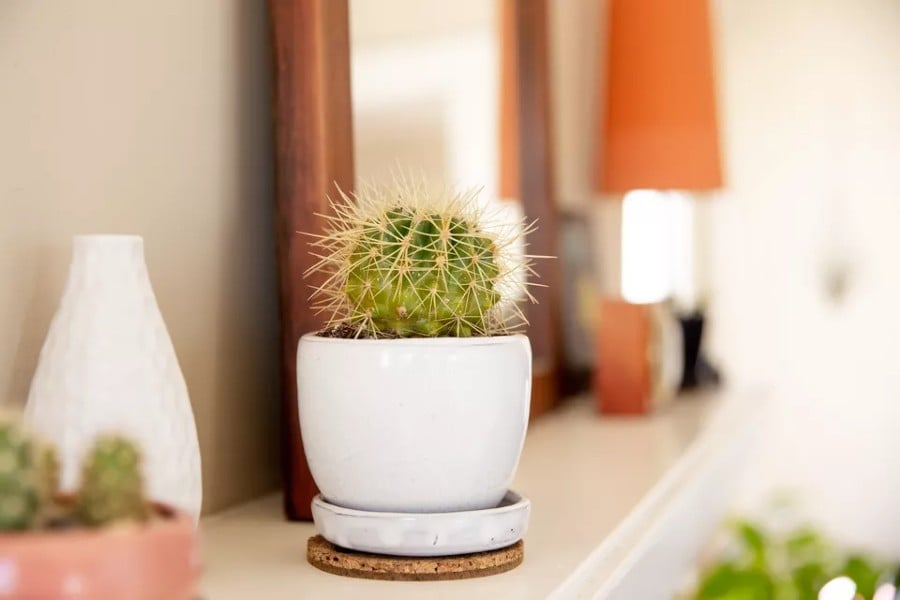
3. Holly Plant
Holly plants have long been the symbol of Christmas. A classic native evergreen hedging plant that makes a feature for your garden. These trees often provide food and shelter to wildlife. Birds like blackbirds or robins eat their bright red berries. Most species of the holly plants also provide a good source of pollen and nectars for bees.
Its green spiky leaves are also an intruder deterrent. The Holly plants’ growth is very slow but they can grow up to 10 to40 feet. Most holly plants love a well-drained but not dry, slightly acidic soil in full sun.
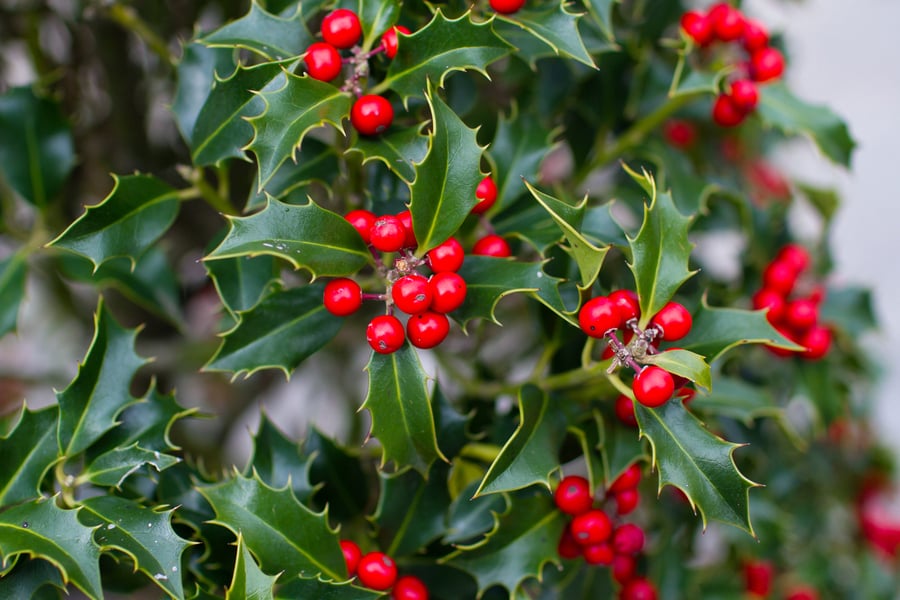
4. California Fuchsia
If you want a vibrant red accent to your property, the California Fuchsia is the one for you. It has a summertime flowering character that can boost your mood.
This low-growing perennial plant is well suited for dry habitats. It has distinctive gray-green leaves that are covered with fine hairs and its flowers are primarily scarlet to orange-red. Flowers usually bloom all spring and summer long, continuing into fall. The flowers form bristle-tipped narrow, vertical spikes
As houseplants, they love sunny locations on well-drained soil and a little summertime water. They can thrive from half a foot to 4 feet in height and up to 3 feet spread. These plants can also be placed in rock gardens or raised planters.

5. Crown of Thorns
Its name may sound common and not really appealing, but this plant is a real gem! It has so many great attributes, you can easily plant the Crown of thorns even in different types of gardens.
These succulents are drought tolerant and heat resistant which makes gardening foolproof. Make sure you do not overwater, which might cause root rot.
The crown of thorns or also known as Euphorbia milii is very famous for being the Christ thorn. It is one of the very few succulents that have actual real spiky leaves that are tear-shaped, fleshy and thick. The green leaves on its stems are equipped with sharp, approximately 2.5 cm long spines.
In Madagascar where these plants are native, they can grow to 5-6 feet tall, but as houseplants, it usually grows up to 2-3 feet tall. They produce red, orange, pink, yellow, or white flowers.
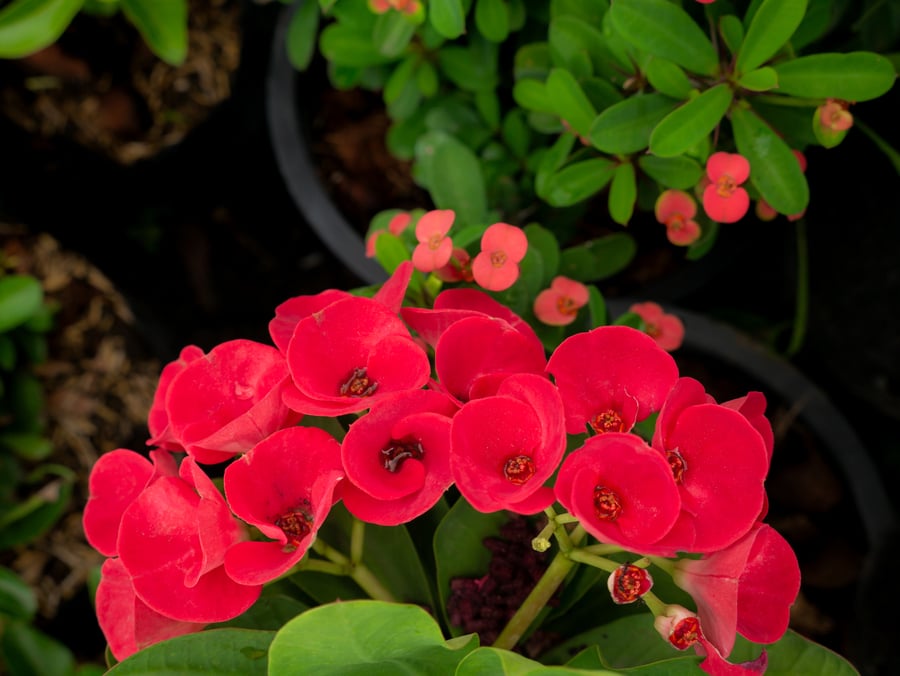
6 Best spiky plants to create dense foliage and defend your house!
People have long used spiky plants as an effective barrier to prevent their homes from intruders or wild animals. You can strategically plant thorny or spiky houseplants, or even a full dense green hedge to secure your premises or yard without compromising the look of your beautiful garden.
It can be very easy for burglars to break into the house especially via first floor windows as they are very accessible. Putting a small spiky plant under the window instead of a flower bed is a great way to protect your home. Make sure that you choose low-growing smaller plants with spikes that will not block your view when it is fully grown, else you might have to prune regularly.
When doing your planting, do not obstruct fuse boxes, manholes, or other areas of your property that may need maintenance in the future. You should also have an escape plan if ever an emergency emerges. You do not want to be trapped in the booby trap you have created! Fill your garden with the following great defensive plants:
1. Bougainvillea tropical plant
If you want to add security to your place with a dash of bright colors, the buongainvillea is perfect for this job. The thorny, dense branches can grow up to 20 to 30 feet tall and wide with proper maintenance. If grown as a ground cover, they can thrive from 1-1/2 to 2 feet tall and spread 8 to 10 feet wide. If that is too big for you, there are dwarf varieties that will only generally grow to be 3-6 feet tall and wide.
This tropical plant blooms flowers with vibrant colours almost all year round, whether spring or winter, it is a bit drought-tolerant and loves sunlight. But beware that this plant can overgrow if you are not pruning it properly.
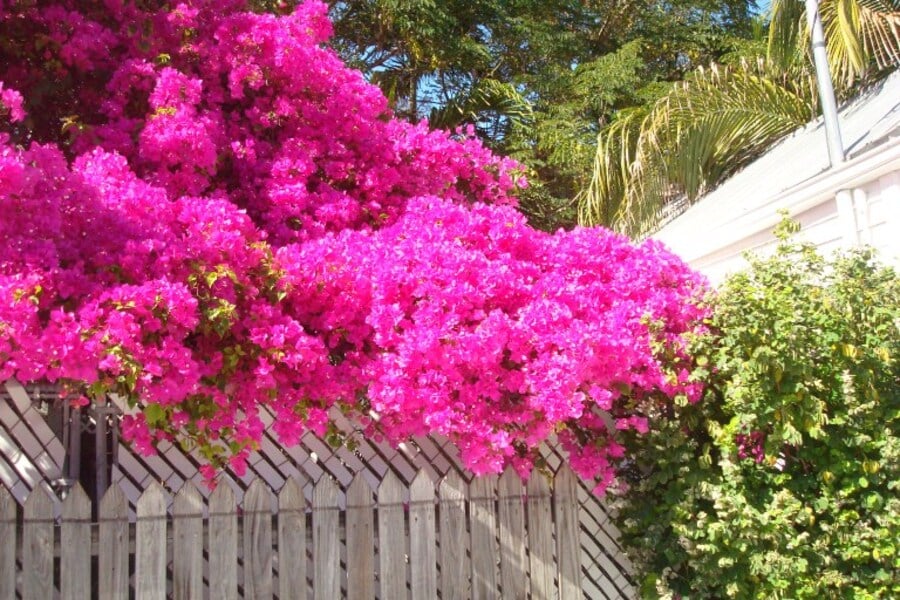
2. Devil’s walking stick
Not just houseplants with spiky leaves, the aralia spinosails or the devil’s walking stick gets its common name from the stout, sharp spines found on its green leaf stalks, stems and branches. They can usually be found along forest edges throughout North America.
As per expert advice, the Devil’s walking stick grows well in average, medium moisture soil conditions in full sun to part shade. It can tolerate a wide range of soils including rocky ones and clay but it prefers moist, fertile and humusy loams. This plant does not need a lot of water and can tolerate many urban pollutants.
The Devil’s walking stick is capable of reaching heights of over 30 feet. It has a long stem with orange prickles, enormous spiny leaves that can grow 3 feet long and wide. It blooms an umbrella of white flower clusters.
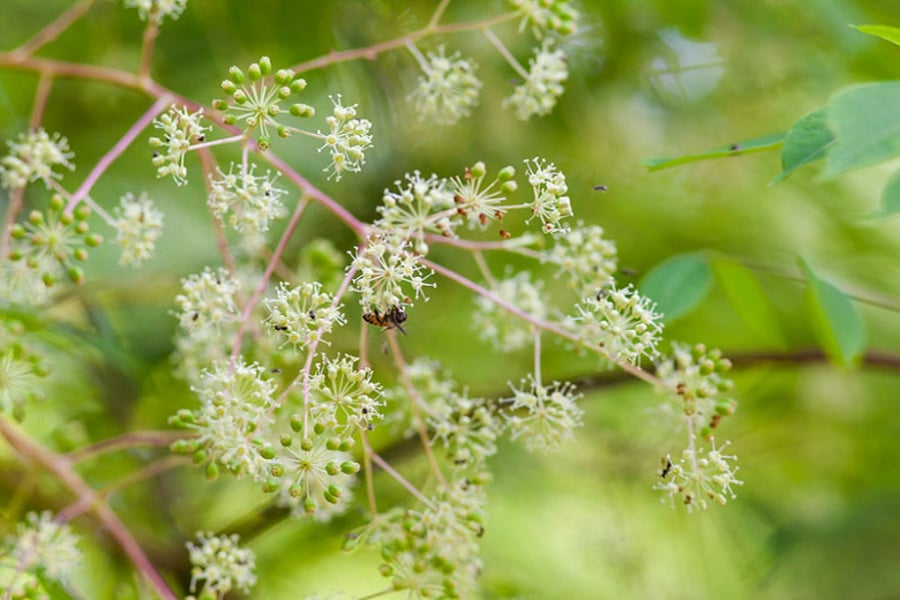
3. Honey Locust
The honey locust tree can reach up to 60 t 100 feet in height. The entire tree is covered with big sharp thorns that could stab unwelcomed guests if they try to sneak in. The dark gray or black bark can surely camouflage the thorns, especially at night.
These species are very adaptable and can even grow in urban conditions. They are drought resistant and can tolerate a good amount of salinity but they prefer moist and well-drained conditions. The Honey locust is a very fast grower and is pretty to boot. During fall, its alternating leaves turn into striking golden yellow.

4. Honey Mesquite Plant
The honey mesquite plant, or Prosopis glandulosa, is a medium-sized shrub with yellow flowers thorns, is native to the deserts of Northern Mexico. Being native to deserts, the plant is drought resistant and can survive hot and dry conditions.
These shrubs have twisted trunks and yellow flowers and will add a pop of beauty to any landscape. They can grow up to 3 feet tall and 40 feet as wide. It has a reddish-brown, scaly and rough bark with long thorns that makes it very suitable to be used as a defence hedge.
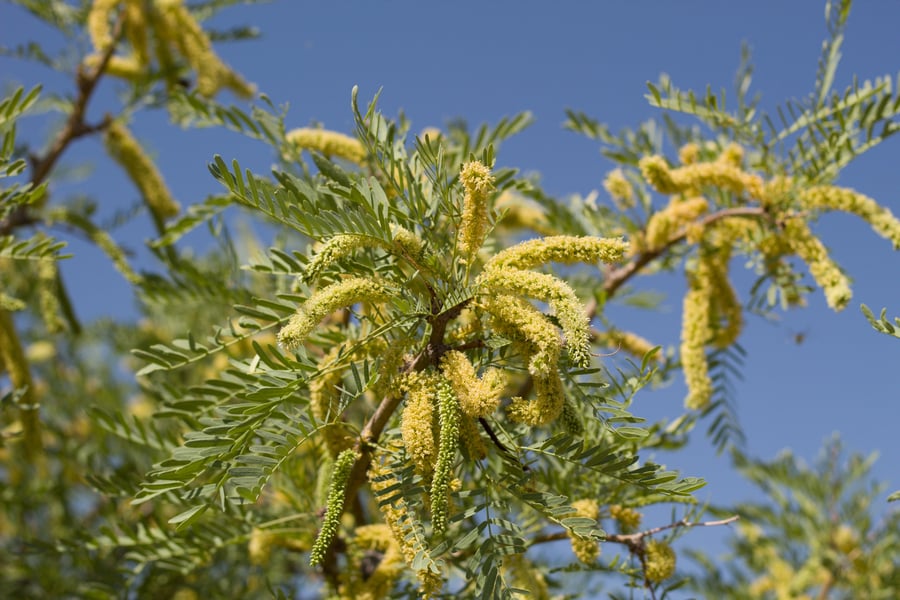
5. Porcupine Tomato
The porcupine tomato is a native of Madagascar. It has a bright purple bloom during summer that will surely give your property a refreshing vibe. But do not be fooled by its fuzzy bluish-green, beautifully lobed leaves, these leaves pack a punch! The furry orange stems that display festive orangey-red midribs cunningly cover up huge upright thorns!
This beauty loves full sunlight, drained soil with a bit of compost added to it. A mature plant can grow 3 feet tall and 3 feet wide. It is best planted in a container and placed strategically into vulnerable areas of your property mixed with other plants as a surprise for trespassers. All in all, an amazing houseplant!
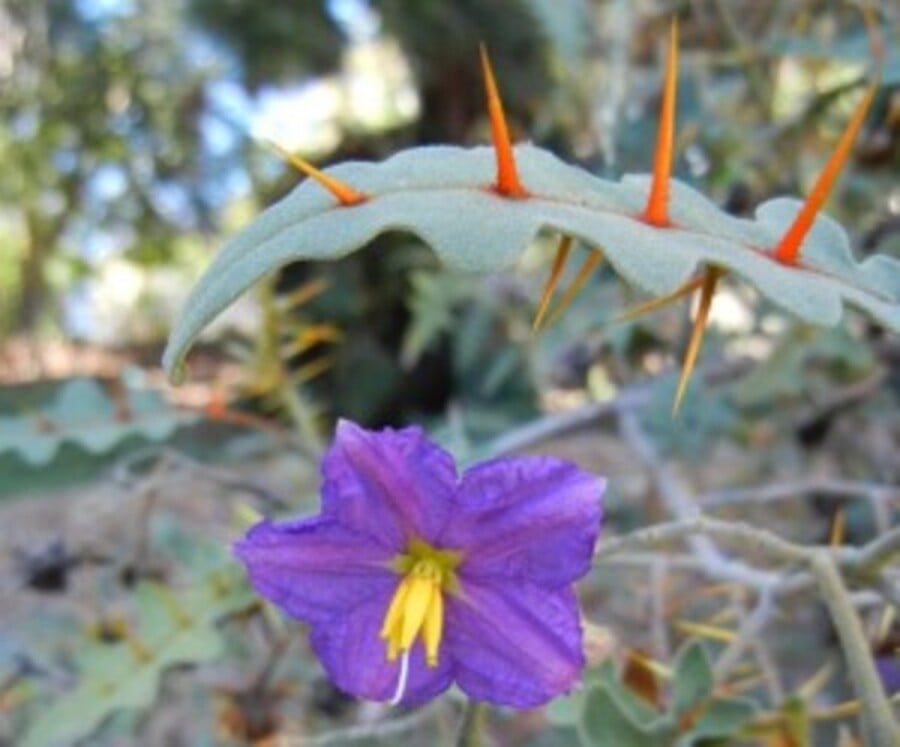
6. Pyracantha
A Pyracantha, also called a Firethorn, is a shrub that has beautiful flowers and unbelievable red, yellow or orange berries in autumn or winter. The Pyracantha can grow up to 10 to 15 feet. They are usually propped into the wall and can used as privacy hedge because of their thorns that prevent nosy neighbours from peeping in!
It prefers full sun to partial shade and thrives in well-drained soil, they are also resistant to heat and drought. Planting in highly fertile soil will produce rampant new growth of up to 2 feet per year. Flowers and fruits will start to grow after the plant reaches 1 year old.
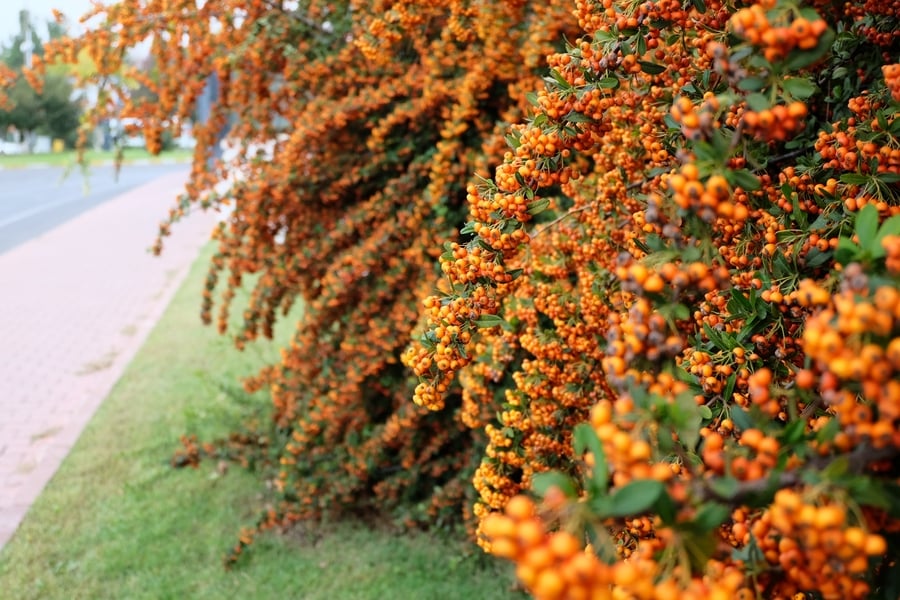
4 Best spiky plants packed with health benefits
Plants have long been cultivated for their beauty, scent, and of course nutritional and health benefits. Spiky plants, likewise, are not just useful as defensive borders or as decorative elements, many of they also have great health benefits that can boost your wellbeing.
1. Aloe Vera Plants
Aloe vera plants are succulents that have thick green distinctive and boldly spiky leaves. An easy plant to grow, you will find them easily in many gardens.
The lovely aloe vera plant has been used for thousands of years to treat various medical conditions, it’s medicinal properties can help you with health issues inside and out. It is very well known for its soothing gel Aloe vera gel. Not just good for skin issues, it can be blended with water to create aloe vera juice. An amazing health drink, aloe vera contains 75 potentially active constituents, including vitamins, enzymes, minerals, sugars, lignin, saponins, salicylic acids and amino acids.
You can easily harvest a mature plant from your backyard. It can help you relieve heartburn, treat constipation, it has also has anti-inflammatory properties, a rich source of antioxidants that help fight free radicals. It is a great source for Vitamin A, Vitamin C, Vitamin E, Beta-carotene, Folic acid, Calcium and Magnesium.
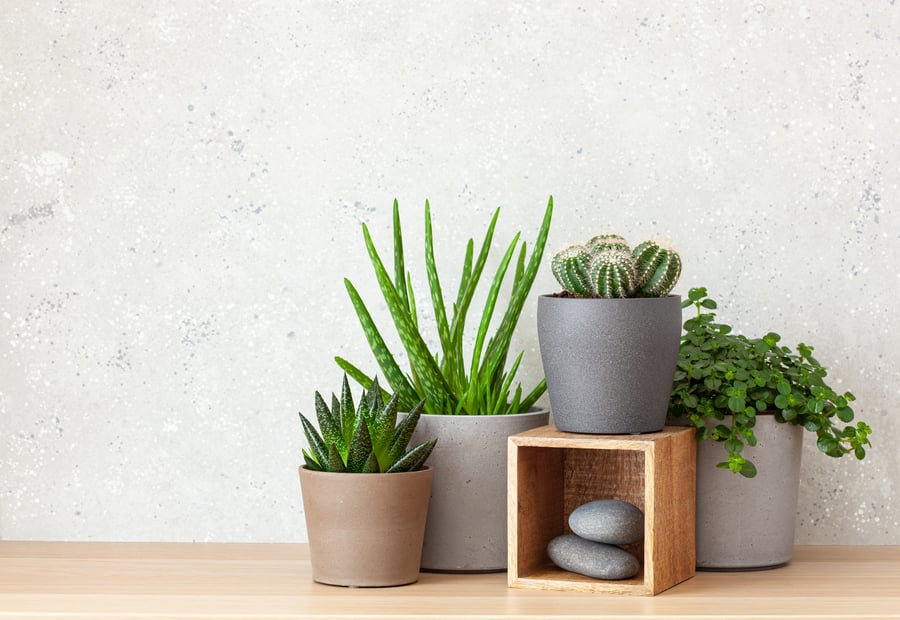
2. Barberry
Berberis vulgaris, commonly known as barberry, is a shrub with sharp spikes that produces tart red berries, cultivated in Iran for more than two centuries. It grows easily, is tolerant to both sun and shade, and is drought-resistant, which makes it a very ideal garden plant.
These highly nutritious berries contain several beneficial compounds, most notably berberine. It acts as an antioxidant and may help manage conditions like diabetes and treat acne. Barberries are also packed with Vitamin C, fiber and carbohydrates. For centuries, it has been used to treat diarrhea and dental syndromes.
The berries can be harvested from September to November, do pick them carefully and individually to stay away from the thorns.
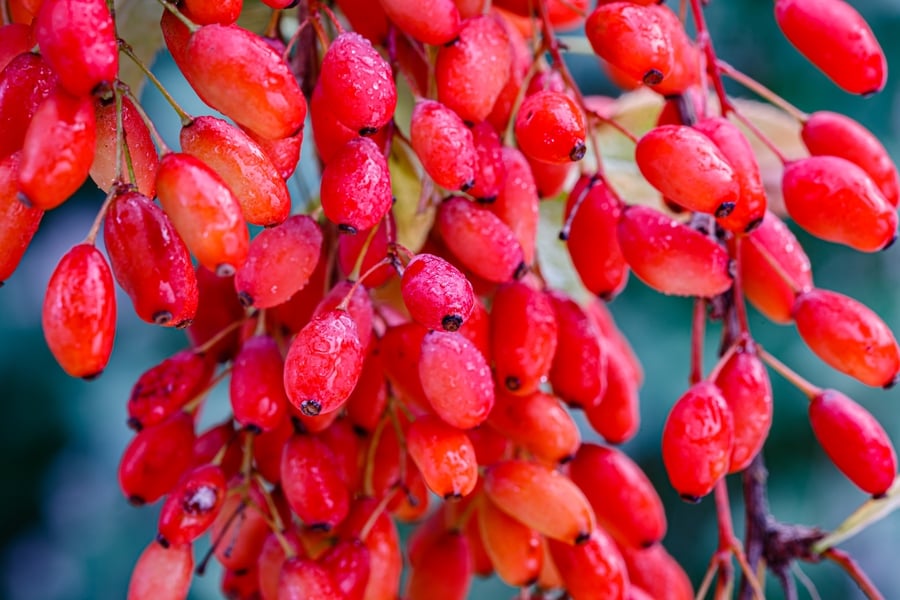
3. Hawthorn
With their plentiful dagger-sharp thorns, it’s not hard to understand how the hawthorn tree got its name. With their sharpness and size, a hawthorn tree’s thorns can cause serious wounds. Some thorns can measure up to four inches long. Besides all the scary thorns, Hawthorns carry beauty with them. Flowering in early spring, known as ‘May Blossoms’. The tree or bush is covered with beautiful small, white flowers.
Almost everything in a Hawthorn plant can be used as medicine. Nothing is going to waste! It can help improve cardiovascular health, provide relief for anxiety, help with insomnia and it can also help get rid of bad cholesterol.
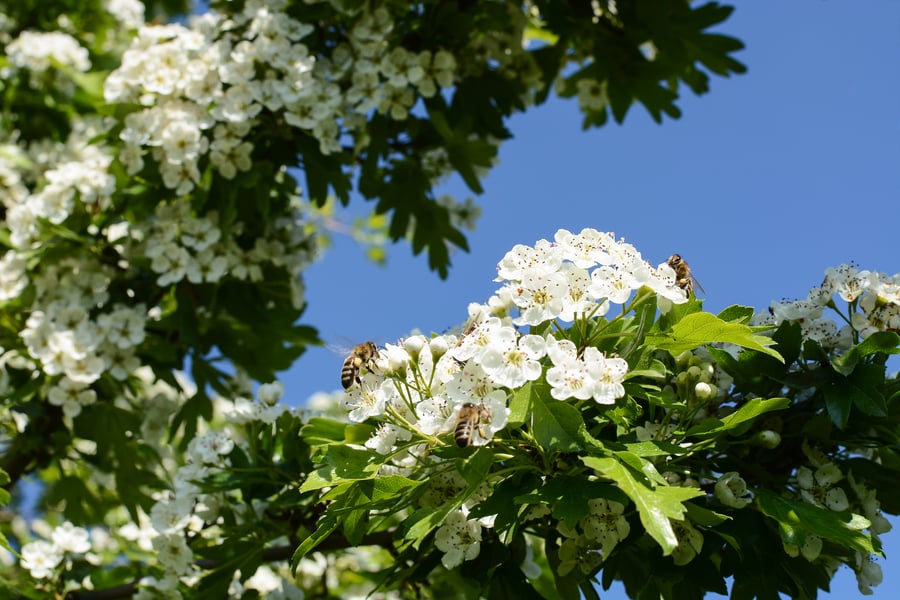
4. Chinese Jujube
The Chinese jujube, also known as Chinese date, is native to China and has been grown and enjoyed for over 4,000 years. The tree is grown in gardens ornamental fruiting trees that can reach 30 to 40 feet tall. This very productive tree usually blooms around June to July and can produce between 40 to 100 pounds of fruit per season. But you have to be careful to avoid their sharp thorns when harvesting.
You can get a lot of health benefits from the Chinese Jujube. Then can be consumed as snacks, candies, soup, puree and even vinegar. The Chinese Jujube can aid the body with weight loss, improve mental health, improve digestion and it is a very powerful antioxidant. Some people claim that it can also relieve cough, prevent and treat osteoporosis.
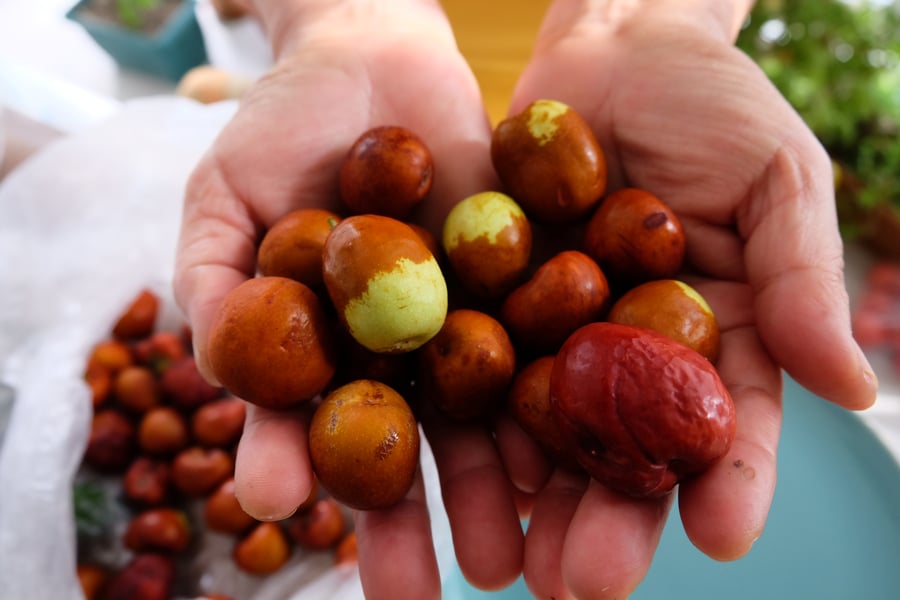
Why spiky plants make great decor
When picking up new plants from garden centers, do consider getting some spiky plants. The thorns and spikes can add interesting depth to your garden and home, making it more intriguing and interesting. Read more here on how plants can be used in interior design.
Moreover, spiky plants can also act as a defensive barrier in your property, or a surprise element at vulnerable points of your house. Plenty of spiky plants also have great health benefits. All in all, there are so many good reasons to keep a few around your garden!
Knowing about plant texture helps a lot for home design and garden design. Check out this article when considering your design theme.
For the best pots for your planters, check out our range of fiberglass planters.


